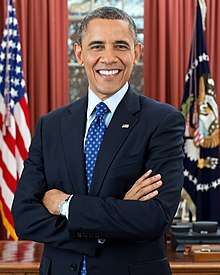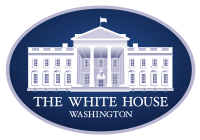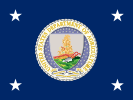Tom Vilsack
Thomas James Vilsack (/ˈvɪlsæk/; born December 13, 1950) is an American politician and lawyer who served as the United States Secretary of Agriculture from January 2009 until January 2017. A member of the Iowa Democratic Party, Vilsack also served as the 40th Governor of Iowa from 1999 to 2007.
Tom Vilsack | |
|---|---|
 | |
| 30th United States Secretary of Agriculture | |
| In office January 20, 2009 – January 13, 2017 | |
| President | Barack Obama |
| Deputy | Kathleen Merrigan Krysta Harden Michael Scuse (acting) |
| Preceded by | Ed Schafer |
| Succeeded by | Sonny Perdue |
| 40th Governor of Iowa | |
| In office January 15, 1999 – January 12, 2007 | |
| Lieutenant | Sally Pederson |
| Preceded by | Terry Branstad |
| Succeeded by | Chet Culver |
| Member of the Iowa Senate from the 49th district | |
| In office January 11, 1993 – January 11, 1999 | |
| Preceded by | Jack Hester |
| Succeeded by | Mark Shearer |
| Mayor of Mount Pleasant | |
| In office 1987–1992 | |
| Preceded by | Edward King |
| Succeeded by | Stanley Hill |
| Personal details | |
| Born | Thomas James Vilsack December 13, 1950 Pittsburgh, Pennsylvania, U.S. |
| Political party | Democratic |
| Spouse(s) | |
| Children | 2 |
| Education | Hamilton College, New York (BA) Albany Law School (JD) |
| Signature |  |
On November 30, 2006, he formally launched his candidacy for nomination for President of the United States by the Democratic Party in the 2008 election, but ended his bid on February 23, 2007.[1]
Barack Obama announced Vilsack's selection to be Secretary of Agriculture on December 17, 2008. His nomination was confirmed by the United States Senate by unanimous consent on January 20, 2009. Until his January 13, 2017 resignation[2] one week prior to the end of Obama's second term as president, he had been the only member of the U.S. Cabinet who had served since the day Obama originally took office.
On July 19, 2016, the Washington Post reported that Vilsack was on Hillary Clinton's two-person shortlist to be her running mate for that year's presidential election. Virginia Senator Tim Kaine was ultimately selected.[3]
Early life, education and career
Vilsack was born on December 13, 1950 in a Roman Catholic orphanage (or "Foundling Home") in Pittsburgh, Pennsylvania, where his 23-year-old birth mother (a secretary) had lived since September 1950 under the pseudonym of "Gloria"; he was baptized as "Kenneth."[4] He was adopted in 1951 by Bud, a real-estate agent and insurance salesman, and Dolly Vilsack. They named him Thomas James.
Vilsack attended Shady Side Academy, a preparatory high school in Pittsburgh. He received a bachelor's degree in 1972 from Hamilton College in New York. While at Hamilton he joined the Delta Upsilon fraternity. He received a Juris Doctor (J.D.) in 1975 from Albany Law School of Union University, New York.
He married Christie Bell in 1973, and moved with her to her hometown of Mount Pleasant, Iowa in 1975, where he practiced law.[5]
Early political career
In Mount Pleasant, Vilsack raised funds to rebuild an athletic facility for young people; in a 2016 interview, he describes himself "as the Jerry Lewis of Mount Pleasant for a couple days" when he hosted a pledge drive on the local radio station to raise the funds.[6] This led him to involvement in the local Chamber of Commerce and United Way. He and his wife volunteered in the 1987 presidential campaign of Joe Biden. After the mayor of Mount Pleasant was gunned down in December 1986, Vilsack led a fundraising drive to build a memorial fountain.[7] The deceased mayor's father asked Vilsack to run for mayor of Mount Pleasant; he was elected and began serving in 1987.[5] He was elected to the Iowa Senate in 1992.[5] Following his election, he worked on legislation requiring companies who received state tax incentives to provide better pay and benefits. He helped pass a law for workers to receive health coverage when changing jobs, and helped redesign Iowa's Workforce Development Department. He also wrote a bill to have the State of Iowa assume a 50% share of local county mental health costs.
Governor of Iowa
In 1998, Terry Branstad chose not to seek re-election after 16 years as governor. The Iowa Republican Party nominated Jim Ross Lightfoot, a former U.S. Representative. Vilsack defeated former Iowa Supreme Court Justice Mark McCormick in the Democratic primary and chose Sally Pederson as his running mate. Lightfoot was the odds-on favorite to succeed Branstad and polls consistently showed him in the lead.[8] However, Vilsack narrowly won the general election and became the first Democrat to serve as governor of Iowa in 30 years and only the fifth Democrat to hold the office in the 20th century.
During the 2000 contest for the Democratic presidential nomination between Vice President Al Gore and former U.S. Senator Bill Bradley, he remained neutral.[9]
In 2002 he won his second term in office by defeating Republican challenger attorney Doug Gross by eight percentage points.[10]

In first year of his second term, Vilsack used a line-item veto, later ruled unconstitutional by the Iowa Supreme Court, to create the Grow Iowa Values Fund, a $503 million appropriation designed to boost the Iowa economy by offering grants to corporations and initiatives pledged to create higher-income jobs. He vetoed portions of the bill that would have cut income taxes and eased business regulations. After a special session of the Iowa General Assembly on September 7, 2004, $100 million in state money was set aside to honor previously made commitments. The Grow Iowa Values Fund was reinstated at the end of the 2005 session: under the current law, $50 million per year will be set aside over the next ten years.
Candidates seeking to replace Vilsack, notably Des Moines politician Ed Fallon, criticized this program.[11] They complained that companies attracted to Iowa by the fund can be lured away by financial incentives elsewhere and that the legislation does not promote new business creation.[12]
For most of Vilsack's tenure as governor, Republicans held effective majorities in the Iowa General Assembly. Following the November 2, 2004, elections, the fifty-member Senate was evenly split between Democrats and Republicans and Republicans held a 51–49 majority in the House of Representatives.
In July 2005, Vilsack signed an executive order allowing all felons who had served their sentences to vote.[13] Approximately 115,000 felons regained their voting rights.[14] He said: "When you've paid your debt to society, you need to be reconnected and re-engaged to society". Previously, convicted felons were disenfranchised, but could petition the governor to initiate a process, normally requiring six months, to restore their right to vote.[15]
During the 2005 legislative session, Vilsack signed legislation designed to reduce methamphetamine use. It imposed greater restrictions on products containing the active ingredient pseudoephedrine, requiring them to be sold behind pharmacy counters rather than via open-access. It required purchasers to show identification and sign a log book. It took effect on May 21, 2005.
Following the U.S. Supreme Court decision in Kelo v. City of New London in June 2005, Vilsack vetoed a bill to restrict Iowa's use of eminent domain, citing its potential for negative impact on job creation. He said: "You have an interesting balance between job growth, which everybody supports, and restricting the power of government, which a lot of people support".[16] His veto was overridden by the legislature.
Vilsack is a former member of the National Governors Association Executive Committee. He was chair of the Democratic Governors Association in 2004. He was also chair of the Governors Biotechnology Partnership, the Governors Ethanol Coalition, and the Midwest Governors Conference, and has also been chair and vice chair of the National Governors Association's committee on Natural Resources, where he worked to develop the NGA's farm and energy policies.[17]
Vilsack was thought to be high on the list of potential running mates for Kerry in the 2004 presidential election. In 2005, Vilsack established Heartland PAC, a political action committee aimed at electing Democratic governors. In the first report, he raised over half a million dollars. Vilsack left office in 2007; he did not seek a third term and was succeeded by Chet Culver.
2008 U.S. presidential campaign
On November 30, 2006, Tom Vilsack became the second Democrat (after Mike Gravel) to officially announce intentions to run for the presidency in the 2008 election. In his announcement speech, he said "America's a great country, and now I have the opportunity to begin the process, the legal process of filing papers to run for President of the United States." Vilsack dropped out of the race on February 23, 2007 citing monetary constraints.[18]
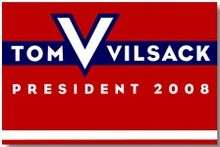
Vilsack's campaign made significant use of social media by maintaining an active MySpace profile, a collection of viral video clips on YouTube, a Facebook profile, videoblog on blip.tv,[19] and a conference call with the podcast site TalkShoe.[20] On January 27, 2007, Vilsack called into the Regular Guys Show hosted by Kurt Hurner to conduct a 15‑minute interview on his running for the Democratic nomination for 2008. Since then, Vilsack appeared again on the show, now The Kurt Hurner Show at Talk Shoe on August 12, 2008, this time as a supporter of Barack Obama for president taking questions from callers to the program for 30 minutes.
During the campaign, Vilsack joined fellow candidates Hillary Clinton and Joe Biden in supporting the establishment of a U.S. Public Service Academy as a civilian counterpart to the military academies.[21]
Shortly after ending his 2008 bid for the White House, Vilsack endorsed Sen. Hillary Clinton and was named the national co-chair for Clinton's presidential campaign.[22]
Views on Iraq
Vilsack's was critical of President Bush's execution of the war in Iraq, but he hesitated to call for an immediate and complete pullout of U.S. forces: "I don't think we're losing in Iraq. It appears to be a draw. People are upset by the fact that their kids are over there and there doesn't seem to be any end to this whole process. It's not pacifism that makes people think this way. They're questioning the credibility and competence of the Commander-in-Chief."[23]
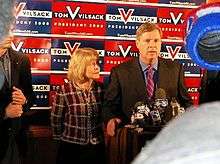
On December 5, Vilsack announced that he favored withdrawing most U.S. forces from Iraq and leaving a small force in the northern region for a limited period. He said that U.S. forces provided the Iraqi government with "both a crutch and an excuse" for inaction. He said that U.S. withdrawal "may very well require them to go through some chaotic and very difficult times", but believed it the only way to force the Iraqi government to take control of the country.[24]
Views on energy security
The Vilsack Energy Security Agenda set out a strategy to dramatically reduce U.S. reliance on foreign energy and to cut the United States' carbon emissions. It also called for replacing the Department of Energy with a new Department of Energy Security, to oversee and redefine the federal government's role in energy policy. The reorganized department would have acted as an institutional advocate for innovation in energy policy, and was intended to ensure accountability as the nation works towards achieving its energy security goals. Through this new department, America's overriding objective in energy policy would have been to make America the unquestioned leader in clean energy, enhancing national security and economic strength.[25]
In a 2007 lecture to the Commonwealth Club of California, Vilsack stated:[26]
Iowa is one of the nation's leading producers of corn-based ethanol, and many people in my state have an economic stake in the expanded use of corn-based ethanol. But the reality is that corn-based ethanol will never be enough to reach our goals. Some have suggested that we import more sugar-based ethanol from Brazil and we should indeed consider all sources of available ethanol...but if we are going to create energy security we can't simply replace one imported source of energy with another. That alone is not security...the only way we can produce enough domestically is if we greatly improve the technology used to produce cellulosic ethanol.
Secretary of Agriculture
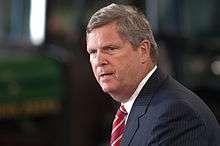
Appointment
On December 17, 2008, then-President-elect Barack Obama announced his choice of Vilsack as the nominee to be the 30th Secretary of Agriculture.[27] Vilsack has governed a largely agricultural state as did the previous two Secretaries of Agriculture, Mike Johanns (who was later a United States Senator from Nebraska) (2005–2007) and Ed Schafer (2007–2009).
The Senate confirmed Vilsack's nomination for the position by unanimous consent on January 20, 2009.[28]
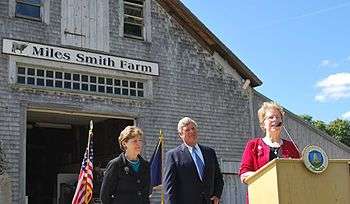
Reaction to Vilsack's nomination from agricultural groups was largely positive and included endorsements from the Corn Refiners Association, the National Grain and Feed Association, the National Farmers Union, the American Farm Bureau Federation, and the Environmental Defense Fund.[29] Vilsack was the founder and former chair of the Governor's Biotechnology Partnership, and was named Governor of the Year by the Biotechnology Industry Organization, an industry lobbying group.[30]
Actions
Vilsack appointed Shirley Sherrod as the Georgia Director of Rural Development, saying that she would be an "important advocate on behalf of rural communities."[31] Months after the appointment, Vilsack forced her to resign based on accusations of considering race in the handling of her job responsibilities at a private advocacy firm in 1986.[32] Subsequent reports claim that he overreacted to a video segment taken out of context, and the secretary expressed his "deep regret" to Sherrod in acting hastily.[33]
Vilsack approved a 15-cent per tree tax on Christmas tree sellers, as a result of over three years of lobbying from the Christmas tree industry. The Christmas tree tax is expected to raise approximately $4 million from holiday revelers. The purpose of the tax is to fund an advertising program by the U.S. Department of Agriculture promoting the sale of real Christmas trees.
On January 24, 2012, Secretary Vilsack was named the designated survivor by President Obama during the President's State of the Union address.[34]
Beef advocacy
In March 2012, Vilsack joined three midwest governors in a campaign to defend the use of a processed beef product made from trimmings left after beef carcasses are butchered, dubbed "pink slime" by its critics. He said that "it's safe, it contains less fat and historically it's been less expensive" and that it should be available to consumers and school districts that want to buy it.[35]
Global warming
At a Drake University forum on climate change April 22, 2014 Vilsack stated "agriculture tends to take the brunt of criticism about climate change, but the industry contributes only 9 percent of the greenhouse gases blamed for a warming planet" and that while there were "challenges globally in terms of agriculture and its contribution to greenhouse gas emissions that's not necessarily the case in the United States."[36]
Considered resignation
In 2015, Vilsack expressed the desire to resign to President Obama. The Washington Post reports that he said "There are days when I have literally nothing to do," he recalled thinking as he weighed his decision to quit."[37] President Obama asked him to stay and asked him to look into the problem of opioid addiction.[37]
Subsequent activities
Shortly after his tenure ended, Vilsack released a statement in support of his succession by Sonny Perdue as the Secretary of Agriculture, making Perdue the only cabinet member nominee to receive a public statement of support from an Obama cabinet member.[38] He was mentioned as a possible candidate for the United States Senate in 2020, for the seat currently held by Republican incumbent Joni Ernst,[39] but subsequently declined to run.[40]
Since February 2017, Vilsack has been President and CEO of the US Dairy Export Council.[41]
Electoral history
- 1992 election for Iowa State Senate, 49th District:
- Democratic Primary[42]
- Tom Vilsack (D), 100.0%
- 1992 General Election:[43]
- Tom Vilsack (D), 50.1% – 12,544 votes
- Dave Heaton (R), 42.1% – 10,551 votes
- Dan Reed (I), 7.8% – 1,945 votes
- 1994 election for Iowa State Senate, 49th District:
- Democratic Primary[44]
- Tom Vilsack (D), 99.9% – 1,201 votes
- scattering, 0.1% – 1 vote
- 1994 General Election:[45]
- Tom Vilsack (D), 98.8% – 12,288 votes
- scattering, 1.2% – 145 votes
- 1998 election for Governor of Iowa:
- Democratic Primary[46]
- Tom Vilsack (D), 51.2%
- Mark McCormick (D), 48.5%
- 1998 General Election:[47]
- Tom Vilsack (D), 52.3% – 500,231 votes
- Jim Lightfoot (R), 46.5% – 444,787 votes
- 2002 election for Governor of Iowa:
- Democratic Primary[48]
- Tom Vilsack (D), 98.6% – 79,277 votes
- Write-in votes, 1.4% – 1,166 votes
- 2002 General Election:[49]
- Tom Vilsack (D), 52.7% – 540,449 votes
- Doug Gross (R), 44.5% – 456,612 votes
- Jay Robinson (Green), 1.4% – 14,628 votes
- Clyde Cleveland (Libertarian), 1.3% – 13,098 votes
- Write-in votes, 0.1% – 1,015 votes
Personal life
Vilsack met his wife, Ann Christine "Christie" Vilsack, in a cafeteria while at college in New York in October 1968. Vilsack approached her and asked, "Are you a Humphrey or a Nixon supporter?" She replied "Humphrey" and they soon began dating. The couple was married on August 18, 1973, in Christie Vilsack's hometown of Mount Pleasant, Iowa. Vilsack and his wife moved to Mount Pleasant in 1975, where he joined his father-in-law in law practice.[5]
Tom and Christie Vilsack have two sons, Jess and Doug. Jess graduated from Hamilton College in 2000 where he, like his father, was a member of the Delta Upsilon Fraternity. Jess received a J.D. from the University of Iowa in May 2003. Doug graduated from Colorado College and the University of Colorado School of Law.
Vilsack won the Powerball in 2020.[50]
References
- Vilsack Dropping Out Boston Globe, February 23, 2007
- Radio Iowa, January 13, 2017
- "Two names emerge from Clinton's VP deliberations: Kaine and Vilsack". Washington Post. Retrieved July 19, 2016.
- "Interview with Tom Vilsack by David Axelrod on The Axe Files". podcasts.cnn.net. August 15, 2016.
- Okamoto, Lynn (October 15, 2009). "Vilsack biography". Des Moines Register. Archived from the original on July 24, 2012. Retrieved October 14, 2009.
- Interview with Tom Vilsack by David Axelrod on The Axe Files podcast, August 15, 2016
- Meyer, Elizabeth (July 12, 2016). "30 years after mayor's death, Edd King Fountain to be rededicated Saturday". The Hawk Eye. Retrieved May 21, 2017.
- Geraghty, Mary (November 2, 1998). "Despite tight race for Iowa governor, Lightfoot ahead among most likely voters". The University of Iowa: News Service. Archived from the original on September 1, 2006.
- Ayres Jr., B. Drummond (September 28, 2000). "The 2002 Campaign: Campaign Briefing". New York Times. Retrieved July 20, 2016.
- "The 2002 Elections: Midwest, Iowa". New York Times. November 7, 2002. Retrieved July 20, 2016.
- "Iowa Joins Ranks of States to Restore Voting Rights to Felons" (PDF). PA Times. American Society for Public Administration. 28 (7): 1–2. July 2005. Retrieved September 5, 2012.
- rod.boshart@thegazette.com, ROD BOSHART. "Iowa Gov. Kim Reynolds signs order restoring felon voting rights". The Quad-City Times. Retrieved August 5, 2020.
- Zernicke, Kate (July 20, 2016). "Iowa Governor Will Give Felons the Right to Vote". New York Times. Retrieved June 18, 2005.
- Gearino, Dan; Dorman, Todd (June 2, 2006). "Vilsack vetoes eminent domain". Sioux City Journal. Retrieved July 20, 2016.
- Longley, Robert. "Tom Vilsack: Secretary of Agriculture". About.com. Archived from the original on September 21, 2012. Retrieved September 5, 2012.
- "Thank You Video". Tomvilsack08.com. Archived from the original on October 1, 2011. Retrieved September 5, 2012.
- Kuhn, Eric. Vilsack Wants To Appeal To ME and YOU. Huffington Post.
- "EPISODE69 – The Kurt Hurner Show". TalkShoe. August 12, 2008. Archived from the original on May 7, 2012. Retrieved September 5, 2012.
- "Endorsements". Uspublicserviceacademy.org. Archived from the original on September 6, 2012. Retrieved September 5, 2012.
- HillaryClinton.com – Media Release Archived November 27, 2008, at the Wayback Machine
- Goldberg, Jeffrey (May 29, 2006). "Central Casting". The New Yorker. Retrieved July 20, 2016.
- Fouey, Beth (December 5, 2006). "Vilsack wants smaller U.S. force in Iraq". Associated Press Archive. Associated Press. Retrieved July 20, 2016.
- "Tom Vilsack for President". Tomvilsack08.com. Archived from the original on October 23, 2012. Retrieved September 5, 2012.
- Marris, Emma; Witze, Alexandra (January 14, 2009). "On the Record". Nature. 457 (7227): 242–243. doi:10.1038/457242a. PMID 19148063. Retrieved July 20, 2016.
- "Sources: Obama to tap Vilsack as agriculture secretary". Cnn.com. December 16, 2008. Retrieved September 5, 2012.
- Senate confirms 6 Obama Cabinet officials, OMB director, CNN website, January 20, 2009.
- Schuff, Sally. Obama picks Vilsack for ad secretary. Feedstuffs, December 22, 2008, p1.
- "BIO – Iowas Vilsack Named BIO Governor of the Year". Bio Technology Industry Organization. September 20, 2001. Archived from the original on December 18, 2008. Retrieved May 21, 2017.
- "Shirley Sherrod named Georgia Director of Rural Development". Ruraldevelopment.org. Retrieved September 5, 2012.
- Sheryl Gay Stolberg; Shaila Dewan; Brian Stelter (July 21, 2010). "With Apology, Fired Official Is Offered a New Job". nytimes.com. Retrieved February 18, 2013.
- Montopoli, Brian (July 21, 2010). "Vilsack: I Will Have to Live With Shirley Sherrod Mistake". CBS News.
- "State of the Union: Tom Vilsack to serve as Cabinet's 'designated survivor". Washington Post. Associated Press. January 24, 2012. Retrieved January 24, 2012.
- Henderson, O. Kay (June 1, 2012). "Branstad, Vilsack team up to combat "smear" campaign against beef product". Radio Iowa. Retrieved July 20, 2016.
- Donnelle Eller (April 22, 2014). "Vilsack: Agriculture unfairly blamed for climate change". Des Moines Register. Retrieved April 24, 2014.
- Jaffe, Greg; Juliet Eilperin (September 26, 2016). "Tom Vilsack's lonely fight for a 'forgotten' rural America". Washington Post. Retrieved May 21, 2017.
- Enoch, Daniel. "Vilsack backs Perdue for Agriculture Secretary". agri-pulse.
- Pfannenstiel, Brianne (December 19, 2018). "Tom Vilsack doesn't say 'yes' or 'no' to a possible 2020 challenge to Sen. Joni Ernst". Des Moines Register. Retrieved September 18, 2019.
- Pfannenstiel, Brianne; Cannon, Austin (February 22, 2019). "Former Iowa Gov. Tom Vilsack will not run for the U.S. Senate against Sen. Joni Ernst in 2020". Des Moines Register. Retrieved September 18, 2019.
- "Tom Vilsack to Take Helm of U.S. Dairy Export Council". U.S. Dairy Export Council.
- "Iowa Secretary of State Official Canvass Summary, 1992 Primary Election" (PDF). Iowa Secretary of State. Retrieved November 7, 2016.
- "Iowa Secretary of State Official Canvass Summary, 1992 General Election" (PDF). Retrieved November 7, 2016.
- "Iowa Secretary of State Official Canvass Summary, 1994 Primary Election" (PDF). Retrieved November 7, 2016.
- "Iowa Secretary of State Official Canvass Summary, 1994 General Election" (PDF). Retrieved November 7, 2016.
- "1998 Gubernatorial Democratic Primary Election Results – Iowa". uselectionatlas.org. Retrieved September 5, 2012.
- Gubernatorial General Election Results – Iowa USA Election Atlas
- "Iowa Secretary of State 2002 Gubernatorial Primary Canvass Summary" (PDF). Iowa Secretary of State. Retrieved November 7, 2016.
- "Iowa Secretary of State 2002 Gubernatorial General Election Canvass Summary" (PDF). Iowa Secretary of State. Retrieved November 7, 2016.
- "Vilsack wins Powerball". Omaha.com. Retrieved February 10, 2020.
External links
| Wikimedia Commons has media related to Tom Vilsack. |
- Biography at the United States Department of Agriculture
- Appearances on Charlie Rose
- Works by or about Tom Vilsack in libraries (WorldCat catalog)
- Interview The Mac Weekly, November 7, 2008
- Harkin: Vilsack tapped for agriculture secretary The Des Moines Register, December 16, 2008
- Appearances on C-SPAN
| Party political offices | ||
|---|---|---|
| Preceded by Bonnie Campbell |
Democratic nominee for Governor of Iowa 1998, 2002 |
Succeeded by Chet Culver |
| Preceded by Gary Locke |
Chair of the Democratic Governors Association 2003–2004 |
Succeeded by Bill Richardson |
| Preceded by Evan Bayh |
Chair of the Democratic Leadership Council 2005–2007 |
Succeeded by Harold Ford |
| Political offices | ||
| Preceded by Terry Branstad |
Governor of Iowa 1999–2007 |
Succeeded by Chet Culver |
| Preceded by Ed Schafer |
United States Secretary of Agriculture 2009–2017 |
Succeeded by Sonny Perdue |
